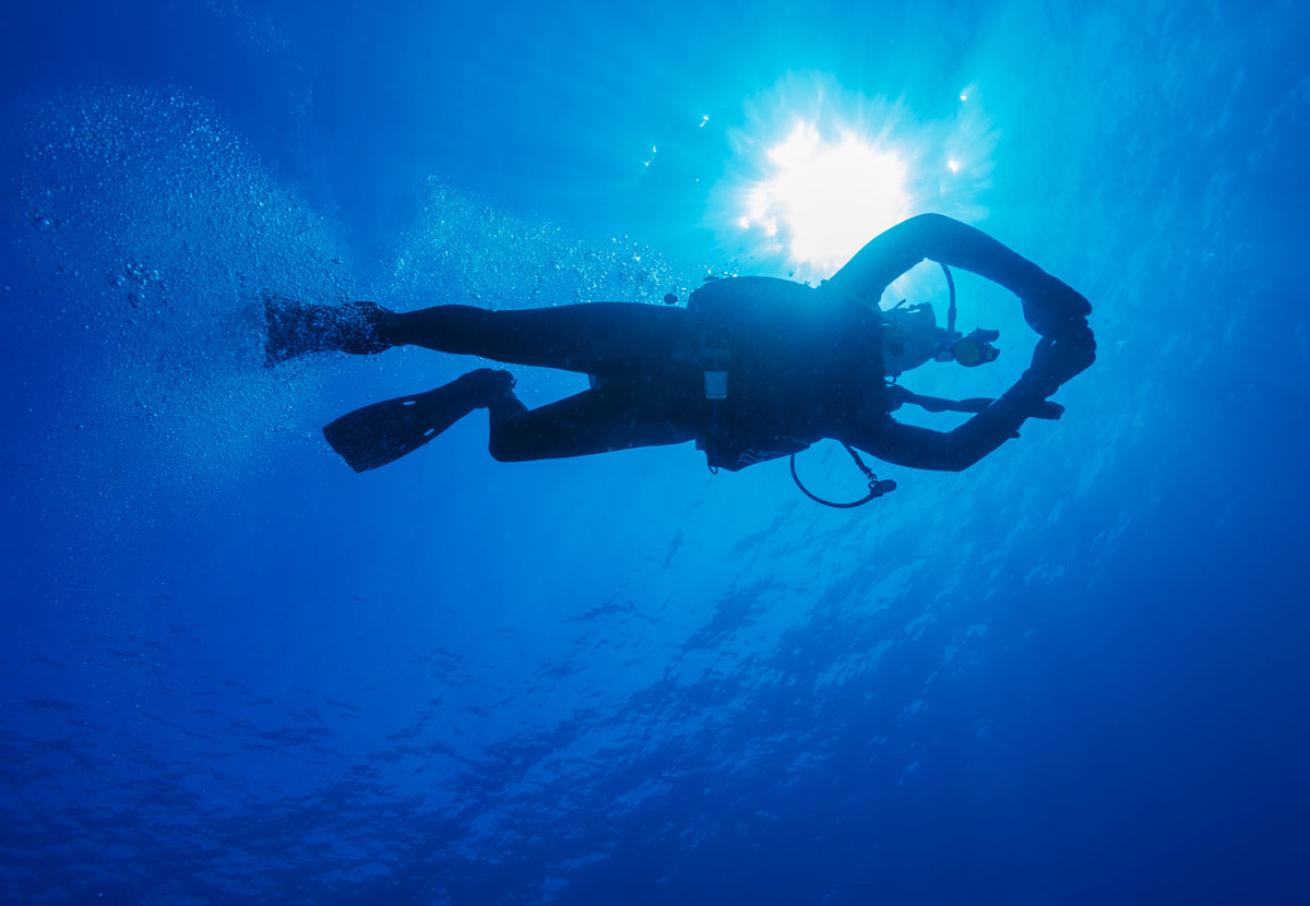How to Navigate Underwater and Avoid Getting Lost on a Dive
Intimidated by underwater navigation? Follow these tips next time you go scuba diving to avoid losing the dive boat.

ShutterstockBe prepared and know what to do if you become separated from the dive boat.
First of all, don’t be intimidated by a divemaster who seems as though he or she could find the dive boat with a mask on backwards. Some people have the natural gift of underwater navigation, an innate sense of direction that would lead them straight to the only glass of water in the Sahara Desert. Other people — and this applies especially to resort-based dive leaders — are so familiar with the area they dive that finding the boat is like a New Yorker finding their way out of Central Park. It might look confusing to a tourist, but not to somebody who sees it nearly every day.
The best advice is to buy a compass and learn how to use it — take an underwater navigation course and practice your skills. Bur here are some tips you can use with or without a compass:
TIP #1:
As you enter the water, look for directional clues that will be visible from below. One big clue is the position of the sun. Where is it now and where will it be when it’s time to surface? Also note the direction the waves are moving and try to determine the direction of the current if there is any.
TIP #2:
Descend with your head higher than your feet to reduce the chances of vertigo, but body angled so you have a clear view of the site. Visibility allowing, make mental notes about what you see – size, shapes and topography that will help you find your way. Follow the mooring/anchor line to the bottom so you start the dive with an established reference point, and so you’ll know what the area looks like when returning to the boat.
READ MORE: How To Use a Compass Underwater
TIP #3:
When you reach the bottom, take a minute to stop and look around. Find the sun. Note the depth of the bottom. Test the current to see which way it’s running. What else can you see from here? Note any reef formations, sand ripples or coral heads. These are all clues that can help you return here at the end of the dive.
TIP #4:
Often, you’ll have an open-water swim from the boat to the reef, wreck, kelp forest or whatever your first destination is. To help you find the boat again, measure the distance by counting the number of fin kicks it takes to get from the anchor line to the site. Also, turn around occasionally to record in your memory what the scene will look like when you return to the boat.
TIP #5:
When you reach the edge of the reef, wreck or whatever, find a landmark to identify the spot as your take-off point for returning to the boat.
READ MORE: Two Divers Get Lost in a Cave
TIP #6:
As you explore the dive site, occasionally pause to get a sense of where you are. Estimate how far and in what direction you’ve come. Again, look back occasionally to record the scene for the return trip.
TIP #7:
When you return to the boat, use all of the mental notes you’ve made about the site. Look for your visual clues as you swim back to the boat. The more clues you found on the outbound trip, the more confident you’ll be for the return.
TIP #8:
If the boat doesn’t appear after the expected number of fin kicks plus 10 percent, find bottom at the same depth as the anchor and follow the contour. Search up-current first. If you don’t find the boat soon, it’s best to surface and look for it. If you’ve been careful, it shouldn’t be far.










